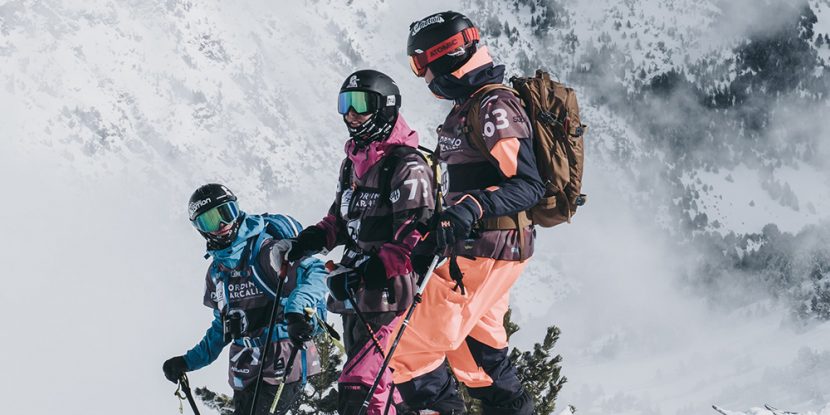Skiing is a beautiful sport, suitable for everyone. Its always fun to get yourself on the mountain and be surrounded by nature whether you are with your family, with friends or even by yourself. However, as an extreme sport, it entails some risk as well, that’s why it is very important to be careful at all times and respect the other skiers on the mountain. There are 10 golden rules that we must all know, and above all respect so that a snow day can be both safe and fun!
If you ask, most of us would say we know the FIS (International Ski Federation) rules although only a few people remember all of them; others don’t even know they exist. However, ignoring them, and above all, not respecting them, can have serious consequences both for those who fail to comply but also for the rest of the skiers. For those who never heard about the FIS rules before, it is necessary to know the rules and the ski resorts are obliged to let you know about them, but we are the users who have the responsibility to follow the rules.
Snow sports carry inherent risks, therefore, a little forethought and common sense can reduce those risks. Always ski under control, adapting your speed to the conditions, visibility and conditions of the snow, in addition to analysing the surrounded dangers, both natural (rocks, ice patches, trees …) and artificial (fences, piste bashers, snow cannons etc.). This, along with the respect between skiers, will make our ski day better, significantly reducing the possibility of suffering an accident.
While skiing we recommend you to always respect signals and ski resort staff, who will always try to help and advice you as they are the experts in the mountain. Prevention is always better than cure!
Now grab a pen, and write down the FIS Standards of conduct in the slopes:
1. Respect for others
The skier or snowboarder must behave in a way that does not endanger or harm others. The skier is also responsible for his equipment. If you left your equipment unattended and it hits someone, you are responsible.
2. Control of the speed and way of skiing or riding
The skier or snowboarder must ski in a controlled manner. You must adapt your speed and your way of skiing or riding to your personal ability and to the conditions of the terrain, snow and weather, as well as the number of people of the slopes. Don’t try to be a world cup racer when the slopes are busy, because you might end crashing into someone or something.
3. Priority
The skier or snowboarder who is behind must choose their route in a way that does not endanger the skier or snowboarder located in front. The slopes are usually wide enough to fit all the skiers. Go to the other corner of the run and both of you will enjoy the ride without risk.
4. Overtaking
Overtaking can be done above or below, right or left, but always in such a way that there is enough space left to prevent the voluntary or involuntary progress of the advanced skier or snowboarder. This rule applies even when overtaking a stopped skier. There is enough space on the mountain, so you don’t need to pass others skimming their skis.
5. Incorporation to tracks, start skiing and turns up
Every skier or snowboarder who joins a sign posted slope must look up and down the mountain to ensure that they can join the slope without danger to themselves or the rest of the skiers.
6. Stopping on the slopes
Unless it is absolutely necessary, the skier or snowboarder should avoid stopping in narrow passages or in places with reduced visibility. In the case of falling in such places, you must move away as soon as possible. If you need to stop always do it on a side of the piste.
7. Ascents and descents on foot
The skier or snowboarder that ascends or descends on foot from a slope must do it always on the side of the piste. Don’t try to hike up on the middle of the runs, and always try to contact the emergency services as they can take you down the base of the resort by a safer way if you are injured.
8. Respect for the signs
The skier or snowboarder must respect all signs. If a sign says that the piste is closed, do not try to ski it, as it must be closed for a reason. Maybe it can look fun, but after the two first turns, you discover that there is only a thin snow layer and all rocks under, in the end, you will only destroy your equipment.
9. Provision of assistance
In case of an accident, every skier or snowboarder has the responsibility to help the injured. Not only if you were the one involved, but also if you find somebody on the ground always stop and ask if they are ok, and offer to contact the pisters, it will only take you one minute!
10. Identification
All skiers or snowboarders who witness an accident, whether they are responsible for it or not, must identify themselves and exchange names and addresses.
The FIS code is the ideal model of behaviour for responsible skiers and snowboarders and its objective is to avoid accidents. Take a few minutes to read these rules again, and memorize them so you don’t forget about them on your next ski holiday! Stay safe and we’ll see you on the slopes!








